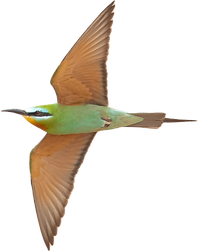
Outside the University of Cambridge Museum of Zoology in June 2023.
Back (from left):
Kirsty Mellor, Rachel Barham, Lizzy Steell, Oliver Demuth, José Antonio Palma Liberona, Pei-Chen Kuo, Charles Wolrige-Gordon, Bassel Arnaout
Middle (from left):
Grace Burton, Sophie Truepenny, Grace Kinney-Broderick, Georgina Scott, Astrid Xu, Annabel Hunt, Charlotte McConnell
Front (from left):
Albert Chen, Junya Watanabe, Guillermo Navalón, Daniel Field, Carla du Toit, Juan Benito, Olivia Plateau, Klara Widrig
our lab has representatives from around the world, with evolutionary interests ranging from morphology to phylogenetics to EMBRYOLOGY. we are united by a passion for understanding the evolutionary origins of the present-day diversity of vertebrate animals, especially birds.
Principal investigator

Prof. Daniel J. Field
djf70[at]cam.ac.uk
Positions: Professor of Vertebrate Palaeontology & Strickland Curator of Ornithology
Hometown: Calgary, Alberta, 🇨🇦
Undergraduate: University of British Columbia: Zoology
MPhil & PhD: Yale University: Geology & Geophysics
CV; Google Scholar; ResearchGate; Twitter
Daniel is Professor of Vertebrate Palaeontology in the Department of Earth Sciences at the University of Cambridge, and the Strickland Curator of Ornithology at the University of Cambridge Museum of Zoology. He is a fellow of Christ's College Cambridge, where Charles Darwin studied as an undergraduate, and is the founding director of the Darwin-Hamied Centre at Christ's College, which promotes research at the intersection of biodiversity science and economics. He is a research associate of the Denver Museum of Nature and Science and the Natural History Museum (London).
Daniel uses the fossil record to answer questions about how, where, and when Earth’s avian biodiversity arose. He is passionate about natural history and science outreach, and enjoys photographing Earth’s vertebrate biodiversity in the field. He is an honorary patron of BioDB.
postdoctoral researchers
Dr Lizzy Steell
ems207[at]cam.ac.uk
Position: Junior Research Fellow, Girton College, 2024-2027
Hometown: Olney, Buckinghamshire, 🇬🇧
Undergraduate: University College London
PhD: University of Cambridge
Favourite Activities: Birding, travelling, hiking, reading
Lizzy is interested in the accumulation of biodiversity and morphological diversity through time and convergent evolution. She is seeking to understand why passerine birds, that make up more than half of living bird species, are just so diverse. Lizzy studies the skeletal morphology and fossil record of passerines to help answer these questions, using and developing a range of phylogenetic comparative methods with discrete traits.

Dr Oliver Demuth
oed24[at]cam.ac.uk
Position: Junior Research Fellow, Clare College, 2024-2027
Hometown: Zurich 🇨🇭
Undergraduate: Zurich University of the Arts: Scientific Visualization
Master’s: University of Bristol
PhD: University of Cambridge
Favourite Activities: Hiking, drawing
Oliver is an evolutionary biomechanist and palaeobiologist with a particular focus on animal movement and locomotion. He is interested in the locomotory evolution and key transitions across diverse vertebrate clades and their association with changing environments. Oliver is currently investigating the timing and origin of flight on the line leading from dinosaurs to modern birds through comparative (functional) anatomy, computational modelling, and phylogenetic comparative methods.
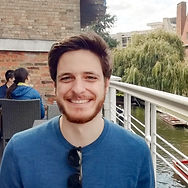
Dr Carla du Toit
cjd92[at]cam.ac.uk
Position: Newton International Fellow, 2023-2025
Hometown: Cape Town, 🇿🇦
Undergraduate: University of Cape Town
PhD: FitzPatrick Institute of African Ornithology, Cape Town
Favourite Activities: Birding, walking her dog, wine tasting, travelling, writing
Carla is interested in the sensory ecology of birds, particularly their sense of touch using their beaks, and how we can combine methodological approaches to determine how extant birds perceive the world around them and find food. Furthermore, she uses comparative methods to examine the morphology of the beaks of extinct birds from fossils to answer questions about their palaeoecology and the evolutionary trends of some of the earliest known crown birds. Her research will focus primarily on seabirds, waterfowl and waders, both extant and extinct.

Dr Guillermo Navalón
gn315[at]cam.ac.uk
Position: UKRI Postdoctoral Research Associate, 2021-2025
Hometown: Madrid, 🇪🇸
Undergraduate: Autonomous University of Madrid (BSc Biology)
Master's and PhD: University of Bristol (MSc and PhD)
Favourite Activities: Birdwatching, scuba diving, drawing, outdoor sports
Guillermo is interested in how evolution structures phenotypic diversity over large timescales.
In particular, he studies how intrinsic factors such as development interact with ecological factors
in macroevolution, focusing on the study of birds and their skeletal anatomy. To accomplish this, he works at several scales from macroevolutionary studies of phenotype across dozens of species to anatomical systematic research on fossils, mostly birds.

Dr Albert “Chendytes” Chen
ac2318[at]cam.ac.uk
Position: PhD Student, 2017-22
Junior Research Fellow, Jesus College, 2022-25
Hometown: Cleveland, Ohio, 🇺🇸
Undergraduate: University of Maryland: College Park, Geology
Master’s: University of Bristol: Palaeobiology
Favourite Activities: Reading, cartooning, birding, science communication
Albert’s primary interests lie in the function, ecology, and evolution of vertebrate animals (especially maniraptoran dinosaurs). He pursues palaeontology due to its ability to shed light on the origins of modern organisms and environments. For his PhD, he studies the anatomy and systematics of a variety of fossil birds and their close relatives.
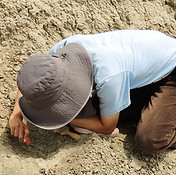
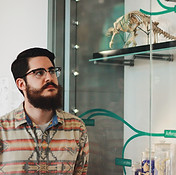
Dr Juan “The Guan” Benito
jb2284[at]cam.ac.uk
Position: PhD Student, 2017-22
Postdoctoral Research Associate, 2022-23
Henslow Research Fellow, Lucy Cavendish College, 2023-2026
Hometown: Barcelona, Catalonia, 🇪🇸
Undergraduate: Universitat de Barcelona: Biology
Master’s: Universitat Autónoma de Barcelona: Palaeontology
Favourite Activities: Craft beer, weird music, science communication, wargaming & modelling
Twitter | Lucy Cavendish | Cambridge Phil Soc
Juan is interested in the evolutionary relationships between extant and fossil organisms and how ecological factors affected morphological evolution in deep time. His research focuses on reconstructing the origins of the anatomically modern bird body plan combining insights from living bird diversity together with fossil evidence. To this end, he uses a combination of comparative anatomy, phylogenetic inference, and high-resolution three-dimensional computed tomography to reconstruct morphology across avian evolutionary history.
graduate students
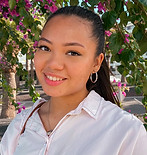
Grace Burton
mgpb3[at]cam.ac.uk
Position: Harding Distinguished Postgraduate Scholarship PhD student, 2022-
MPhil Student, 2021-22
Hometown: Streatham, London, 🇬🇧
Undergraduate: Imperial College London, Biological Sciences
Favourite Activities: Piano, jigsaw puzzling, visiting museums
Grace is interested in vertebrate phylogeny and key evolutionary transitions. She is working on understanding the internal architecture of the bird skeleton, and is especially interested in deriving new anatomical insights from 3D modelling techniques. Her previous research has focused on the evolution of early jawed vertebrates, including placoderms.
Annabel Hunt
akh56[at]cam.ac.uk
Position: PhD Student, 2022-
Hometown: Devon, 🇬🇧
Undergraduate: University of Oxford, Earth Sciences (MEarthSci)
Favourite Activities: Assisting with dinosaur digs, preparing fossils, hiking, swimming, kayaking
Annabel is passionate about using micro-computed tomography to reveal novel anatomical features of fossil vertebrates and to use these observations to study morphological evolution and phylogenetic relationships. She is using her prior knowledge of the early reptilian skull, and experience segmenting bone from CT scans, to investigate the anatomy and evolution of specific aspects of the dinosaurian skull (including modern birds). Annabel is co-supervised by Prof. Steve Brusatte (University of Edinburgh).
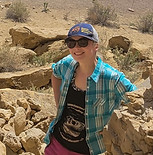
Grace Kinney-Broderick
gb716[at]cam.ac.uk
Position: PhD student, 2023-
Hometown: Chicago, Illinois, 🇺🇸
Undergraduate: Boston College: Environmental Geoscience
Master’s: University of Bristol: Palaeobiology
Favourite Activities: Wildlife photography, spending time with her dog Truffle, working out,
Kpop, and dancing
Grace is passionate about both paleontology and ornithology thus culminating in a PhD focusing on the Cretaceous Pygostylian: Confuciusornis. She will be updating and adding to the previous description of this basal bird with a special focus on their hindlimb morphology. Using CT scan data and geometric morphometrics she will compare the pedal anatomy with that of extant species.

Jasper Lee
jyjl2[at]cam.ac.uk
Position: MPhil student, 2024-
Hometown: Hong Kong 🇭🇰
Undergraduate: University of Cambridge: Natural Sciences (Zoology)
Favourite Activities: Reading, thinking, learning about weird and wonderful animals
Jasper is interested in how macroevolutionary concepts and patterns can be applied to a wide variety of biological problems. For his MPhil, he is exploring the utility of phylogenetic distinctiveness in taxonomy, conservation and scientific communication, with a particular focus on the avian tree of life.

Tingyu Yu
ty345[at]cam.ac.uk
Position: PhD student, 2025-
Hometown: Beijing, 🇨🇳
Undergraduate: Peking University, Paleontology
Master's: Institute of Vertebrate Paleontology and Paleoanthropology, University of Chinese
Academy of Sciences, paleontology and stratigraphy
Favourite Activities: Football, indoor climbing, birding, traveling
Tingyu is interested in the fossil record of Galliformes and the evolution of other major bird clades in the Cenozoic. She plans to use CT scan data to investigate evolutionary changes in skull and endocast morphology and continue publishing systematic descriptions of new fossil bird species.

Katrina van Grouw
kv340[at]cam.ac.uk
Position: PhD student, 2021-
Hometown: Aylesbury, Buckinghamshire, 🇬🇧
Undergraduate: University of Plymouth
Master's: Royal College of Art
Favourite Activities: Writing; keeping birds; a million things to do with bird skeletons,
museums, and specimen preparation; walking on the downs with her dog; visiting pubs.
Katrina has a longstanding involvement with birds and comparative anatomy, and has written and
illustrated several outstanding books on these topics. For her PhD Katrina is interested in the mysterious extinct seabird clade Pelagornithidae, the bony-toothed birds, and hopes to shed new light on their ecology and evolutionary history.
.jpg)
Lab Alumni
Postdocs
Dr Olivia Plateau
Position: Swiss Mobility Postdoc, 2023-2025
Olivia's Research: Olivia worked on the developmental underpinnings of avian palatal disparity.
Dr Fabio Alfieri
Position: SNSF Swiss Postdoctoral Fellow, 2023-2025
Fabio's Research: Fabio worked on the evolutionary determinants of the internal structure of bird wing bones.
Dr Andrzej Wolniewicz
Position: NAWA Bekker Fellow, 2023-2025
Andrzej's Research: Andrzej's research focuses on the origins and early evolution of reptiles, with a particular focus on understanding how the major groups of extant and extinct reptiles are related to one another.
Dr Junya Watanabe
Positions: Newton International Fellow, 2019-2021
Japan Society for the Promotion of Science Fellow, 2022-23
Junya's Research: Junya’s research investigated the influence of developmental factors on the evolution and
diversification of birds.
Dr Neil Brocklehurst
Position: UKRI Postdoctoral Research Associate, 2021-2022
Neil's Research: Neil investigated major patterns early in bird evolutionary history, investigating support for alternative phylogenetic arrangements of deep neornithine lineages and support for alternative temporal scenarios of bird diversification.
Dr Simon Ducatez
Position: UKRI Postdoctoral Research Associate, 2020-2022
Simon's Research: Simon investigated the evolution of life history strategies during his postdoc, and has now begun a faculty position in Tahiti(!) at the University of French Polynesia.
PhD students
Dr Bassel Arnaout
Position: PhD student, 2021-25
Bassel's Research: Bassel's PhD investigated the developmental underpinnings of phenotypic divergence in the skulls of Galliformes and Anseriformes (chicken-like and duck-like birds). Bassel moved on to a postdoctoral position at the University of Calgary.
Dr Klara Widrig
Position: Cambridge Gates Scholarship PhD student, 2020-24
Klara's Research: Klara's PhD investigated the evolution and fossil record of the major avian clade Palaeognathae (ratites and kin). Klara moved on to a Peter Buck postdoctoral fellowship at the Smithsonian.
Thomas MacGillavry
Position: Visiting PhD candidate from University of Vienna, 2024
Thomas' Research: In the Field lab Thomas worked on projects related to the evolution of cognition and behavioural complexity in the bird-of-paradise family.
Dr Oliver Demuth
Position: PhD Student, 2020-23
Oliver's Research: For his PhD Oliver developed several new quantitative approaches to incorporate three-dimensionally preserved fossils into computational biomechanical analyses, with a focus on reconstructing the evolution of modern flapping bird flight. Oliver moved on to a postdoc with Peter Falkingham at Liverpool John Moores University and a Junior Research Fellowship at Clare College, Cambridge.
Dr Pei-Chen Kuo
Position: Cambridge-Taiwan Scholarship PhD student, 2020-23
Pei-Chen's Research: For his PhD, Pei-Chen investigated the evolution of morphology in the avian feeding apparatus, employing sophisticated geometric analyses to incorporate living and fossil birds into a single evolutionary framework. Pei-Chen moved on to a Meeker Postdoctoral Fellowship at the Field Museum in Chicago.
Dr Lizzy Steell
Position: PhD Student (NERC C-CLEAR DTP), 2019-23
Lizzy's Research: Lizzy's PhD addressed comparative morphology and phylogenetics of most diverse order of birds, the passerines. Lizzy moved on to a teaching lectureship at UCL followed by a Junior Research Fellow at Girton College, Cambridge.
Dr José Antonio Palma Liberona
Position: Visiting PhD student, Pontificia Universidad Católica de Chile, 2023
José's Research: José focused on how embryonic mechanical stimulation can drive shape skeletal morphology.
Dr Jake Berv
Position: Visiting NSF Graduate Fellow, Cornell University, 2018
Jake's Research: Jake and Daniel continue to collaborate on a number of projects related to exploring the interface between micro and macroevolution, and avian palaeontology. Jake is currently a Michigan Fellow at the University of Michigan.
Dr Juan Benito
Position: PhD Student, 2017-22
Juan's Research: Juan's PhD research investigated the evolution of skeletal morphology in crownward stem birds, with a particular focus on the Mesozoic clade Ichthyornithes. Juan returned to our lab for postdocs including a Junior Research Fellowship at Lucy Cavendish College.
Dr Albert Chen
Position: PhD Student, 2017-22
Albert's Research: Albert’s PhD research focused on phylogenetically problems in early crown bird evolution, with a focus on Strisores and Neoaves. Albert returned to our lab for a postdoc (a Junior Research Fellowship at Jesus College).
master's students
Stanley Somogy
Position: MPhil student, 2024-25
Stanley's Research: Stanley investigated the possibility that an extended zone of variability existed in the early evolutionary history of crown birds, and assessed its theoretical consequences for macroevolutionary inference.
Georgina Scott
Position: MPhil student, 2023-24
Georgina's Research: Georgina investigated the morphology and phylogenetic relationships of early anseriform fossils.
Christian Voiculescu-Holvad
Position: MPhil student, 2023-24
Christian's Research: Christian investigated the palaeoecology of the Danish White Chalk mosasaur assemblage.
Abi Crane
Position: MPhil Student, 2021-22
Abi's Research: Abi investigated the morphology of the mandible of early-diverging bird groups with an emphasis on phylogenetic implications for the ‘wonderchicken’, Asteriornis maastrichtensis. She has moved onto a PhD at the University of Southampton.
Matthieu Chotard
Position: Visiting Research Master’s Student, 2021
Matthieu's Research: Matthieu joined our lab for six months, studying the evolution of avian tarsus morphology while on exchange from Université de Rennes 1.
Garance Robin
Position: Visiting Research Master’s Student, 2020
Garance’s Research: Garance joined our lab for six months, studying the evolution of bird body size while on exchange from Université de Rennes 1.
Grace Burton
Position: MPhil Student, 2021-22
Grace's research: Grace's MPhil project focused on quantifying the extent of postcranial skeletal pneumaticity in birds. Grace remained in our lab for her PhD.
Klara Widrig
Position: MPhil student, 2019-20
Klara's research: Klara's MPhil project focused on developing a three-dimensional musculoskeletal atlas of the tinamou Nothoprocta pentlandii. Klara remained in our lab for her PhD.
undergraduate students
Alexander Colesmith
Position: Earth Sciences Part III project Student, 2024-25
Alex's Research: Alex investigated the evolutionary reduction of avian manual phalanges.
Jacob Barlow
Position: Earth Sciences Part III project Student, 2024-25
Jacob's Research: Jacob explored shifts in the body's centre of mass through avian evolutionary history.
Max Möbus
Position: Zoology Part II project Student, 2024-25
Max's Research: Max explored the morphology and systematics of enigmatic fossil birds from the Cambridge Greensand.
Yi Hong Tan
Position: Zoology Part II project Student, 2024-25
Hong's Research: Hong investigated the use of soundscape data from primary rainforest as a source of macroecological data.
Wayne Liang
Position: Zoology Part II project Student, 2023-24
Wayne's Research: Wayne used linguistic tools to investigate the potential for adaptive tuning of bird sounds in different environments.
Cian Williams
Position: Zoology Part II project Student, 2023-24
Cian's Research: Cian sought to understand ecological and phylogenetic variation in attributes of avian sound production. Cian received the prestigious John Ray Prize for his excellent final-year project.
Anyaise Green
Position: Zoology Part II project Student, 2023-24
Anyaise's Research: Anyaise explored ontogenetic variation in the morphology of the avian bill-tip organ and its osteological correlates.
Annie Worth
Position: Zoology Part II project Student, 2023-24
Annie's Research: Annie performed geometric morphometric analyses on the palate bones of a phylogenetically diverse range of birds.
Pip Young
Position: Zoology Part II project Student, 2023-24
Pip's Research: Pip's field project investigated links between avian diversity and abundance and forest disturbance in Malaysian Borneo.
Stanley Somogyi
Position: Zoology Part II project Student, 2023-24
Stanley's Research: Jasper undertook two projects this year—an investigation of zygodactylid foot morphology using CT scans and analysis of freshwater stream community ecology in Borneo.
Jasper Lee
Position: Zoology Part II project Student, 2023-24
Jasper's Research: Jasper undertook two projects this year—an investigation of syrinx morphology using CT scans and analysis of freshwater stream community ecology in Borneo.
Alex Adderley
Position: Zoology Part II project Student, 2023-24
Alex's Research: Alex undertook two projects this year—an investigation of hindlimb morphology in stem-passerines and an analysis of freshwater stream community ecology in Borneo.
Liam Brady
Position: Earth Sciences Part III project Student, 2023-24
Liam's Research: Liam attempted to investigate morphology of the important fossil bird Enaliornis.
Sophie Truepenny
Position: Zoology Part II project Student, 2022-23
Sophie's Research: Sophie investigated the morphology of the hyolingual apparatus in nectarivorous birds for her Part II project. Sophie received official commendation from the Zoological Society of London for her excellent final-year project.
Rachel Barham
Position: Zoology Part II project Student, 2022-23
Rachel's Research: Rachel investigated the inner ear morphology of owls for her Part II project.
Astrid Xu
Position: Zoology Part II project Student, 2022-23
Astrid's Research: Astrid investigated quadrate morphology in owls for her Part II project.
Charlotte McConnell
Position: Zoology Part II project Student, 2022-23
Charlotte's Research: Charlotte illustrated and described a new fossil from the London Clay Formation for her Part II project.
Georgina Scott
Position: Zoology Part II project Student, 2022-23
Georgina's Research: Georgina characterised aspects of skeletal morphology in presbyornithid fossil birds for her Part II project.
Charles Wolrige Gordon
Position: Zoology Part II project Student, 2022-23
Charles' Research: Charles investigated ear and skull morphology in owls for his Part II project.
Kirsty Mellor
Position: Zoology Part II project Student, 2022-23
Kirsty's Research: Kirsty characterised skeletal pneumatisation in the cervical vertebrae of anseriforms for her Part II project.
Emily Smith
Position: Zoology Part II project student, 2021-22
Emily's Research: Emily investigated the internal architecture of avian long bones from a structural perspective.
Natalie Rose
Position: Zoology Part II project student, 2021-22
Natalie's Research: Natalie investigated patterns of ossification in the embryonic skulls of birds.
Alexandra Davies
Position: Zoology Part II project student, 2021-22
Alex's Research: Alex investigated the morphology of the tongue apparatus in sunbirds (Nectariniidae).
Joel Gayford
Position: Zoology Part II project student, 2021-22
Joe's Research: Joel investigated ontogenetic shifts in patterns of allometric growth in sharks. He moved on to a master's at Imperial College London. Joel received the prestigious John Ray Prize for his excellent final-year project.
Louis Fisher
Position: Zoology Part II project student, 2021-22
Louis' Research: Louis investigated comparative aspects of bone fusion in the bird skull.
Kit Baker
Position: MESc student, 2019-2020
Kit’s Research: Kit studied the morphology of Cretaceous avialans using high resolution three-dimensional visualisation techniques.
Dania Kewbank
Position: Undergraduate Final-year Student, 2018
Dania’s Research: Dania studied the pelvic morphology of bird-like dinosaurs using high-resolution visualisation techniques.
Jake Callaghan
Position: Undergraduate Final-year Student, 2017
Jake’s Research: Jake dove into the world of Bayesian phylogenetics to investigate the higher-order interrelationships of living birds and their survival patterns across the K-Pg boundary.
Georgina Halford
Position: Undergraduate Final-year Student, 2017
Georgina’s Research: Georgina examined the evolution of the avian hindlimb by working with high-resolution three-dimensional scans of Mesozoic avialan legs.
Jono Gooch
Position: Undergraduate Final-year Student, 2017
Jono’s Research: Jono studied the anatomy of early amniotes to gain a clearer understanding of how vertebrates originally became specialised for life on dry land.
Joe Hardy
Position: Undergraduate Final-year Student, 2017
Joe’s Research: Joe’s work was focused on the anatomy of the wings of Mesozoic Avialae.




